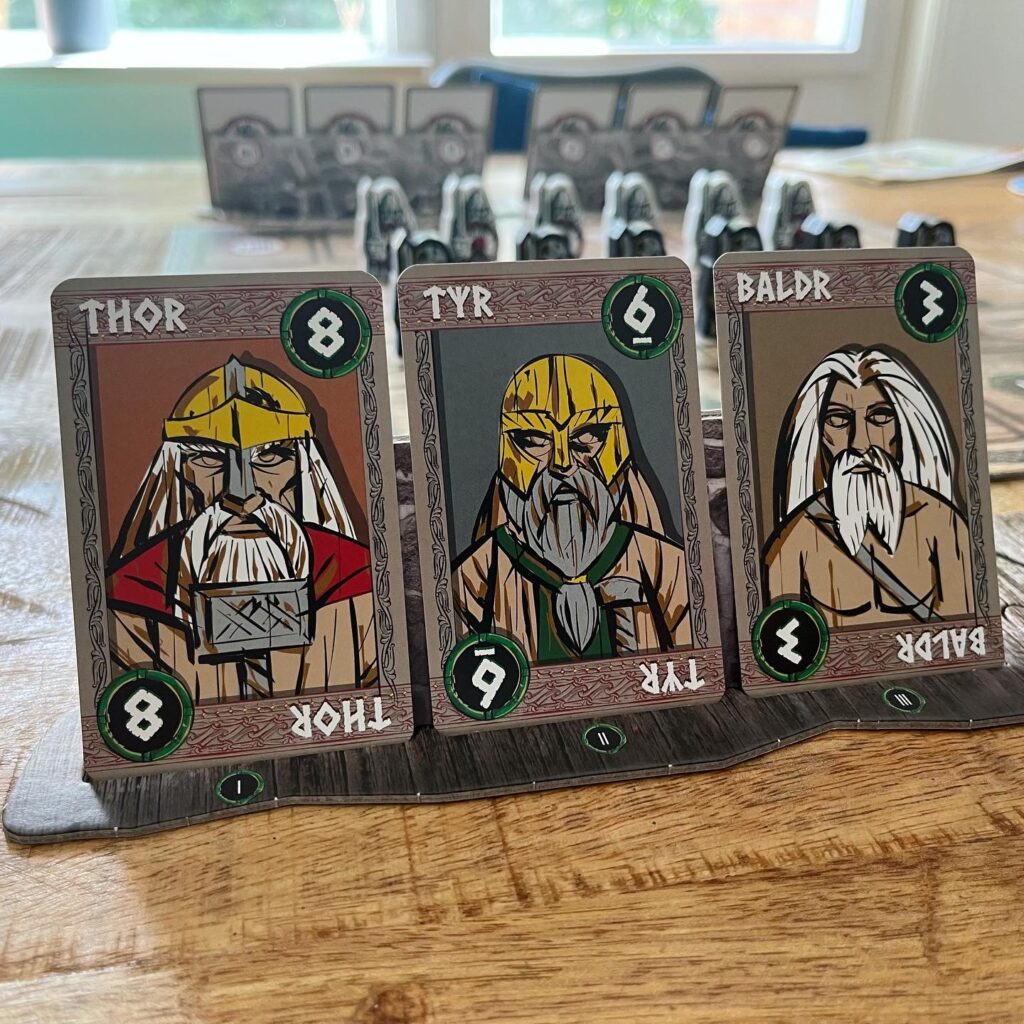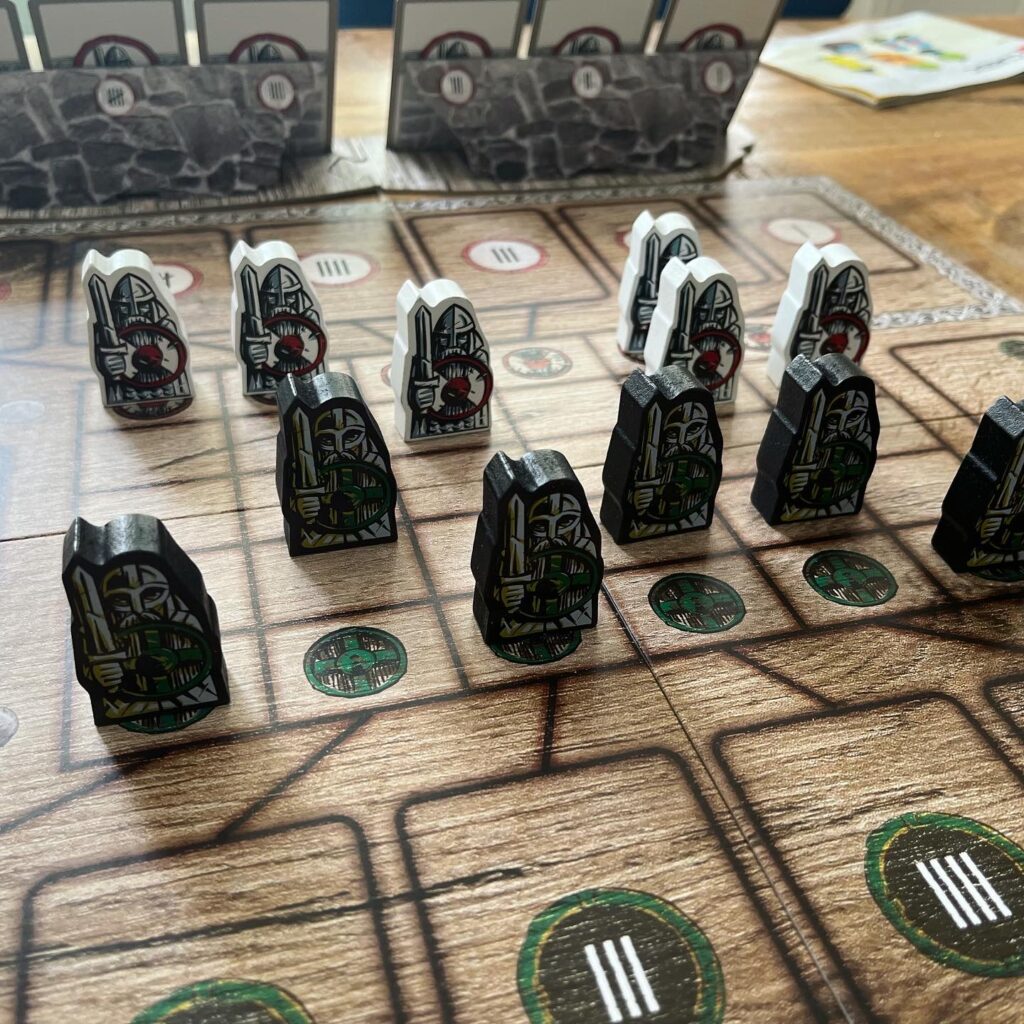Odin (or his Germanic identical twin Wodan) are gods of many things: war, wisdom, knowledge and death, but – together with Loki – Odin also stands for trickery and deceit. Let those traits come together in Odin’s Table: a bluffing game for two players.
Background
Odin’s Table is part of Gamestorm Studio’s Viking’s Tales series. Indeed, these Finnish game makers have decided to incorporate Nordic roots into a (up until now) trio of games.

Odin’s Table takes inspiration from the Tafl family of games. Tafl is Old Norse for table or board, and the most famous Nordic board game is probably Hnefatafl: King’s Table, or Viking chess. Tafl King by Gamestorm Studio is a re-release of this game (and you can find the review here) – Odin’s Table is their own design and an ode to the Tafl games from the far north.
Goal and setup
Odin’s Table combines an abstract strategy game with a heavy dose of bluffing. A bit similar to Stratego, for example. Indeed, as in Stratego, players have a number of combatants that represent a certain value. You know the value of your fighters, but generally not the value of your opponent’s fighters. Unlike Stratego, however, the values are not necessarily tied to the fighters, but to a column of the board, and in addition, these values tend to change.
At the beginning of the game, players set up the board and their player screens. Players use the vision screens to hide their cards from their opponents, but so that they are clearly visible to themselves.
Players set up their playing pieces and shuffle their cards. Both players draw 6 cards and place them face up on the game board so that both players can see which cards their opponent starts with. Actually, you already know the possible setup.


Players secretly put their cards behind their vision screens. Each card belongs to a number and column of the game board. Players are ready to play.
Gameplay
Taking turns, players move one of their playing pieces. Playing pieces may move in any direction imaginable, but may not move through or diagonally between other pieces.
If your piece moves on a square with an opponent’s piece, a battle takes place. Players reveal the cards belonging to the corresponding column on the game board. The player with the highest value wins, and in case of a tie, the attacking player wins. A winning attacking playing piece moves to the defending square. Losing playing pieces are discarded. Inset cards go to the discard piles and new cards are drawn and placed behind the screen.
There are two special cards: Iðunn and Loki. Iðunn has a value of 0 and can be revealed during your turn to force your opponent to reveal a card as well. With Loki, no playing piece loses if Loki is the lowest card, but these pieces swap places after combat.


You win the game when you have three pieces on the opposite side and pieces on the opposite side of the board no longer do me. You can recover pieces from death (or Helheim) by not taking a move action during your turn.
Conclusion
Odin’s Table is a very quick bluff game with a similar game feel to Stratego. It is volatile, easy to learn and there is plenty of surprise in that players don’t know what to expect from each other. You can use the bluffing element strategically, but luck is also prominent as cards are replenished randomly after a battle.
The special properties of the cards Iðunn and Loki add fun elements. As far as we are concerned, the game would have been even more dynamic if more cards had a special ability, so you can fool your opponent even more.
As with Tafl King, Odin’s Table includes beautiful wooden playing pieces. Also, Odin’s Table includes cards that resemble Nordic carvings and a matching game board that allows you to follow in the footsteps of a real Viking.




